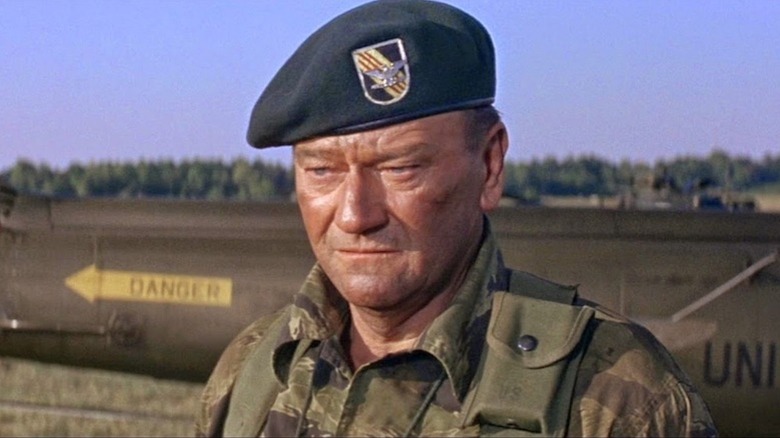It’s a time-honored custom in Hollywood that at a sure level of a film star’s profession, they’re going to give an interview throughout which they’re going to reveal, “What I might actually love to do is direct.” If what they’d additionally love to do is win an Oscar, it isn’t the worst thought. Established actors Robert Redford, Warren Beatty, Richard Attenborough, Kevin Costner, Clint Eastwood, Mel Gibson, and Ron Howard all earned the Academy Award for Greatest Director, so the attract is there. Whether or not they’ve the expertise and temperament to name the photographs behind the digital camera is one thing you may’t know till they offer it a shot. Until that particular person is Gary Busey.
Commercial
The film star’s want to direct wasn’t a lot of a factor within the Nineteen Forties and Nineteen Fifties. If actors had aspirations past on-screen renown, they often needed to supply. That is what the largest star of this era, John Wayne, did when he launched his Batjac Productions in 1952 with the godawful “Massive Jim McLain,” a political thriller that valorized Home Un-American Actions Committee investigators busting communists in post-WWII Hawaii. Batjac did not at all times make rotten motion pictures. The corporate’s existence would finally be justified by its backing of Budd Boetticher’s sensible Western “Seven Males from Now” (which Paul Schrader and Ethan Hawke need to remake) in 1957 and Frank Borzage’s WWII romance “China Doll,” however earlier than the creation of the corporate, Wayne had a imaginative and prescient for an epic that might hopefully be his crowning cinematic achievement.
Commercial
Since 1945, he’d needed to make a film in regards to the Battle of the Alamo, and he finally realized that, to protect the integrity of his imaginative and prescient, he must direct it. This could be the primary of two occasions Wayne dared to step behind the digital camera. Each have been conflict movies, and so they each fell properly in need of their inventive ambitions.
John Wayne’s film star swagger did not translate behind the digital camera
On paper, the thought of John Wayne directing himself as Davy Crockett in “The Alamo” appeared like a winner. Launched in 1960, when Wayne’s presence all however assured a tidy revenue, the film was hyped to the heavens. Critics, nevertheless, have been unimpressed, and the movie’s punishing 161-minute size (202 minutes in case you caught the roadshow launch) wore on moviegoers. Considered merely as a meat-and-potatoes, rah-rah patriotic spectacle, it fails to get the blood up. Richard Widmark, the largest title within the film subsequent to Wayne, expressed displeasure with the star’s heavy-handed directing. Others have been extra complimentary of the Duke’s behind-the-camera method, however when the movie made a disappointing $20 million on a $12 million finances ($1.5 million of which Wayne claimed got here out of his pocket), Hollywood figured this could be the final time the star took a crack at directing.
Commercial
Hollywood figured incorrect. In 1968, animated by the general public’s wavering assist for the Vietnam Struggle, Wayne and Batjack rallied behind an adaptation of Robin Moore’s semi-fictional “The Inexperienced Berets.” Wayne made no bones about the truth that his movie was meant to show public sentiment on the battle, so he performed ball with the Pentagon throughout the board. When the U.S. Military requested for Moore, whose account was not explicitly pro-war, to be excluded from the manufacturing, Wayne purchased the author out.
“The Inexperienced Berets” is now thought of one of many worst movies of Wayne’s profession, and flat-out one of many worst movies ever made, nevertheless it made $35 million on a $7 million finances. If nothing else, Wayne proved that he was nonetheless bankable in a conflict flick. However in taking a co-director function alongside Ray Kellogg, his curiosity in filmmaking appeared to be waning. Wayne would proceed to wield an amazing quantity of energy as a star-producer till his retirement in 1976 with Don Siegel’s “The Shootist,” however he by no means directed one other film. Looking back, we will safely say he wasn’t minimize out for the job. However he was a greater rent than Gary Busey.
Commercial


